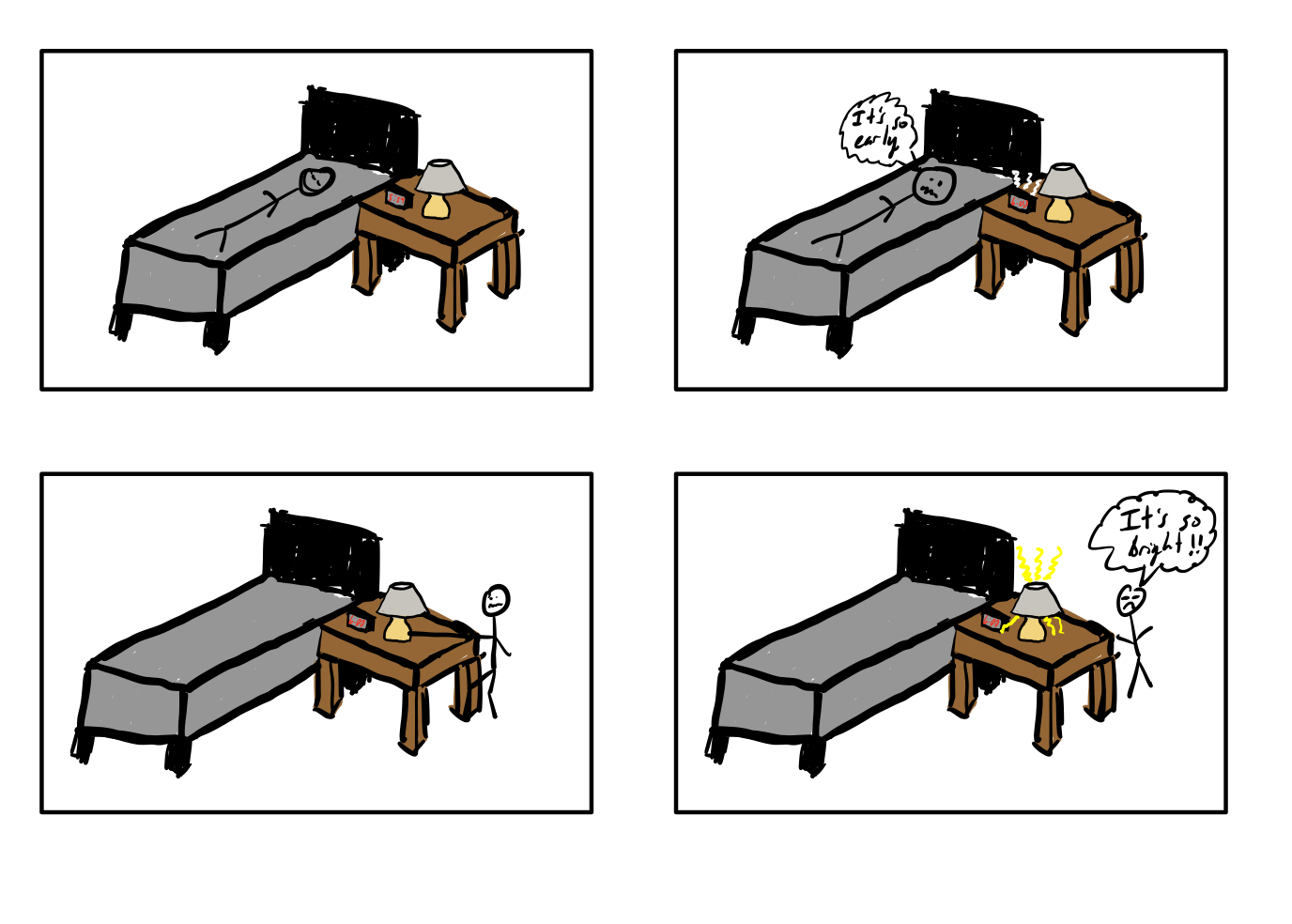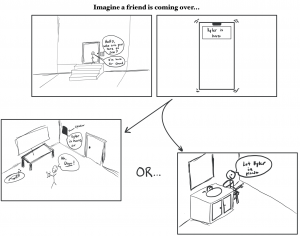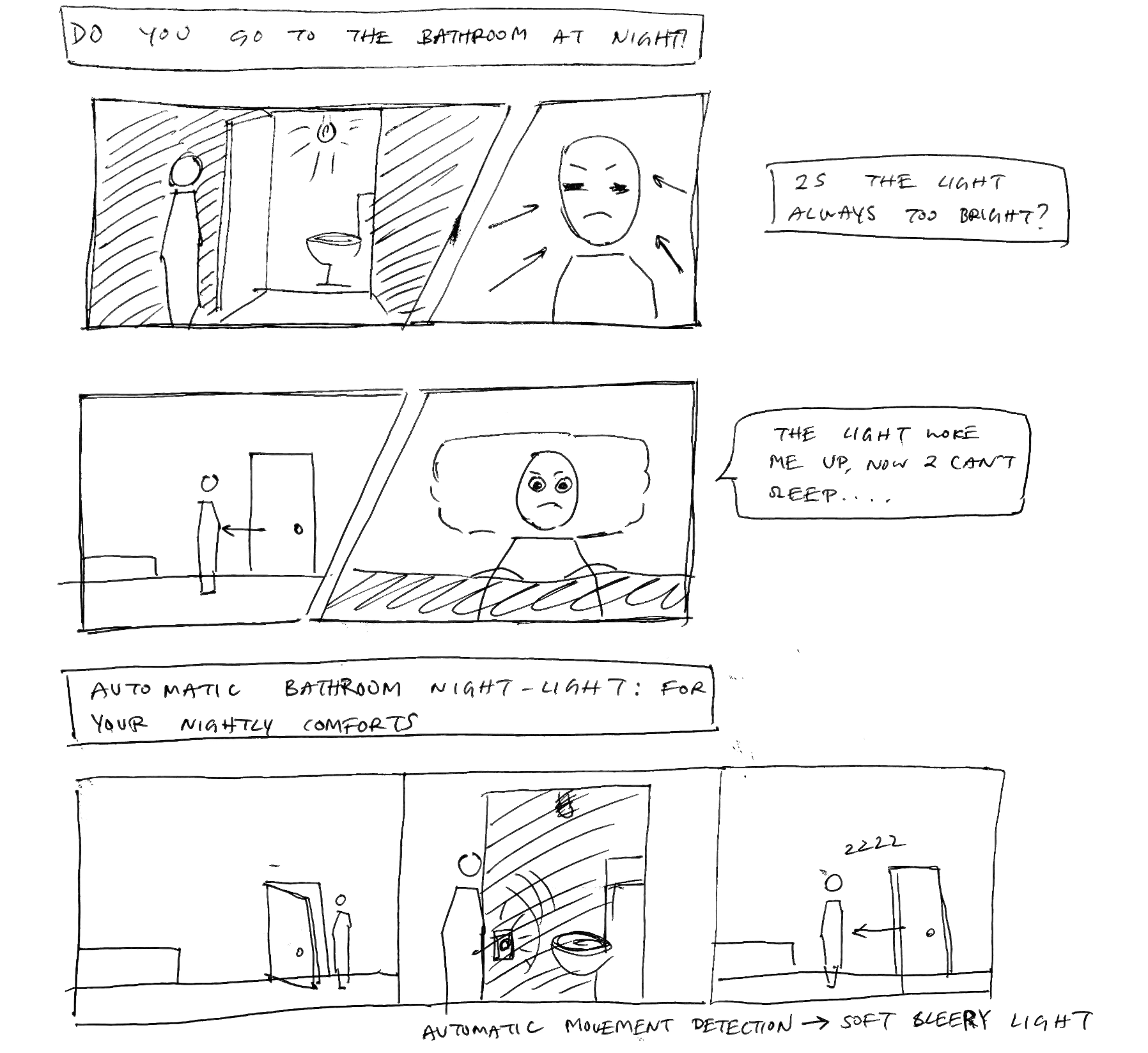Part 1
“Design for Dreaming” vs. Marvel Cinematic Universe (MCU)
Among the fantastical activities happening in ‘Design for Dreaming’ are mirrors changing people’s outfits, following a flying invitation to the Motorama, the automated kitchen-of-the-future with ‘push-button magic,’ and driving on the ‘highway of tomorrow’ which looks like the race track kits my dad has from his childhood. It’s been awhile since I watched the MCU movies, but I did just start watching Wandavision (MCU tv series), which starts out in the 1950s (Design for Dreaming is from 1956) and moves forward in time. There are several scenes of Wanda as the beleaguered 1950s housewife, although her kitchen miracles are due to her superpowers, not due to the kitchen technology. In the tv series, Wanda is married to Vision, a complicated mix of things including part machine, part organic material, plus extra powers from an artifact from the big bang and a snarky AI program who used to run Ironman’s house.
Flying is used by both women to get where they need to go, and both include the technology cliché of woman-gets-a-hand-to-finish-cooking-because-it’s-too-much-for-someone-to-do-with-without-interventions. (When I saw the machine that showed the food and already had all the ingredients for preparation in DFD, I thought of Blue Apron). After watching ‘Design For Dreaming’ I realized they use the same abrupt ‘freeze frame, next frame’ special effect editing technique for the 1950s Wandavision scenes when Vision switches from his real face to his fake human face – nice throwback detail by the crew that made Wandavision.
DFD near-future innovation is based in human technological advancements, while MCU the near-future is more imaginary, subject to outer forces including aliens, gods, and artifacts from space. The technology of the near future in the MCU includes things like armor that turns men into superman and AI with a sense of humor. The creation of Vision is a story of AI undergoing changes which continues to increase its agency and autonomy, until Vision is greater and separate from the original parts that now make up the new whole.
DFD was created as promotional material for General Motors, while MCU is for entertainment – the franchise, composed of many story lines, is the product.
Part 2
“PHONE-KEYS-WALLET!”
I grew up with this chant, which my parents recited – along with a series of motions that are almost a dance – as they prepared to depart the house. It is only most of the time successful in achieving what it is meant to do. Sometimes, my absent-minded father needs to come rushing back in to locate the errant item which he had managed both to find and leave behind in a matter of moments before his departure. In recent years, living in an apartment, I perform this song and dance for my metal sanity, on both my husband (it drives him nuts!) and myself.
PHONE-KEYS-WALLET! is an interactive threshold device, a doorbell-in-reverse which informs the household whether or not something is successfully on its way out. When a person opens the door, the threshold checks for the sensors attached to the phone, keys, and wallet (this can be modified depending on the person’s preferred set of items). A gentle chime indicates all 3 items have been located by the threshold (and therefore mostly likely on the person in question). A soft buzz informs the person leaving that the threshold has not been able to locate all 3 items and the phone-keys-wallet dance should be performed.
NB: There is no guarantee that your spouse will no longer be annoyed by the reminder… only that the object of annoyance will no longer be you.



